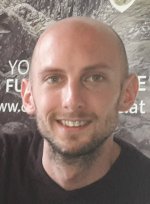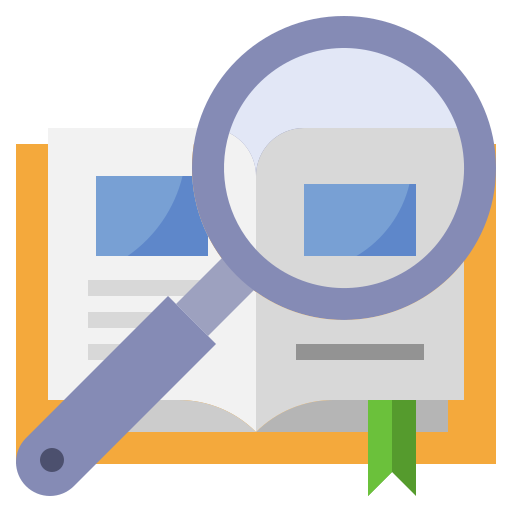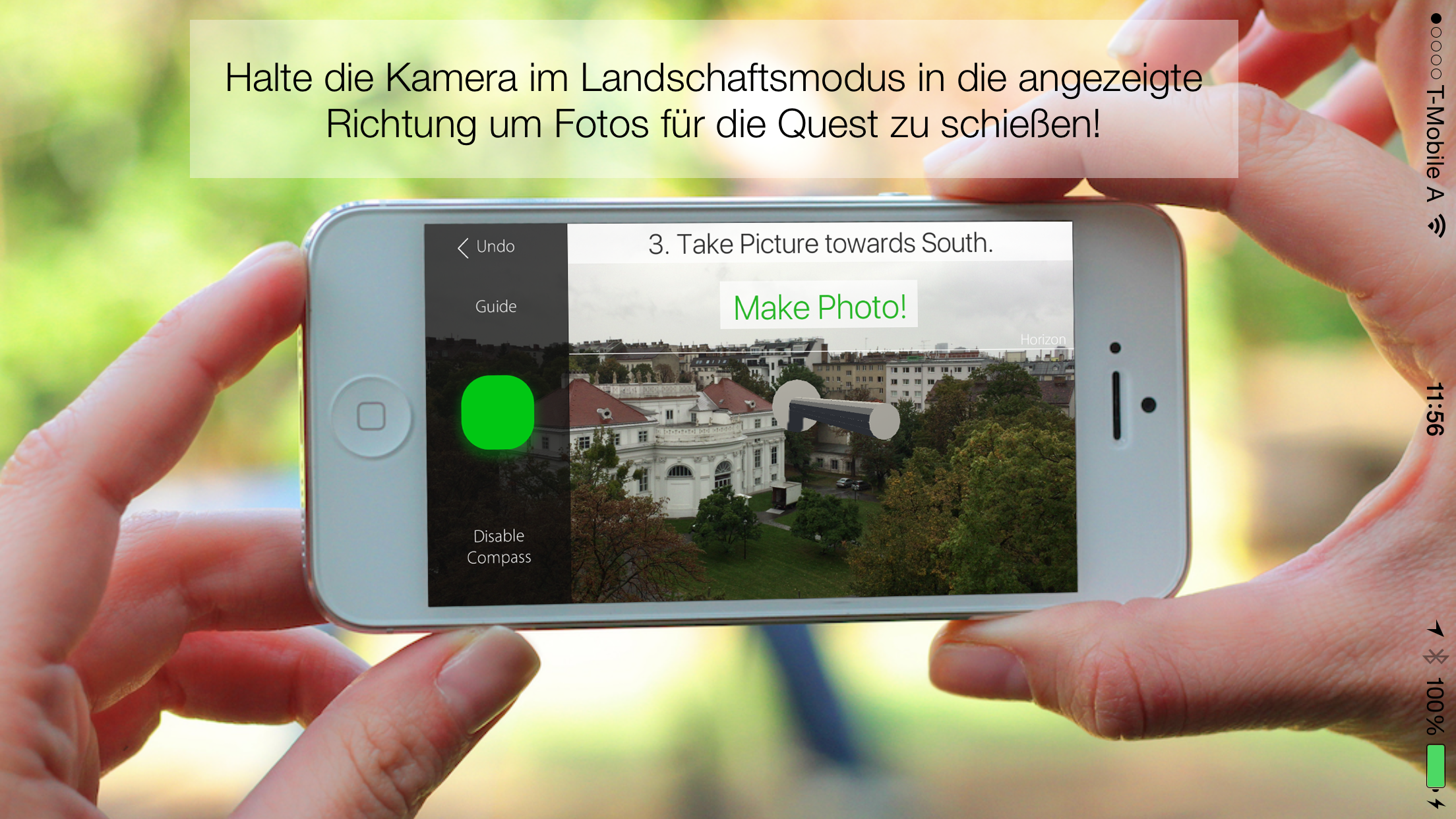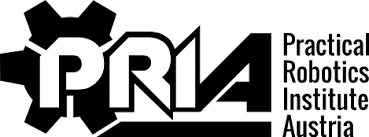
Florian Heigl
Blog Abo
Did you know that you can subscribe to our blog and be automatically informed about new posts? You can find out how here: https://www.citizen-science.at/blog/willkommen-am-blog-von-oesterreich-forscht
DeVOTE
DeVOTE is a research project funded by the European Research Council (ERC) from January 2021 to December 2025, and led by Ass.-Prof. Carolina Plescia to develop and apply a new approach to study what ‘voting’ means for ordinary citizens. The project’s goals are:
- understand what ‘voting’ means for ordinary citizens;
- examine the variation of 'voting' meanings across individuals and across countries;
- study how elections create and modify these 'voting' meanings;
- investigate the consequences of 'voting' meanings for citizens' preferences, attitudes and their political behaviours;
- devise an election 'observatory' for systematic data collection on the meanings of voting on Election Day that can favour the scientific interpretation of election outcomes.
Why does this matter?
The question what is the meaning of voting is of great importance today due to the growing distrust in the act of voting itself and in democratic institutions in many countries around the world. The DeVOTE project investigates the political, symbolic and psychological meanings of voting. What does voting mean to you? Is voting a civic duty? Is there a political alternative to voting?
Using a novel methodological approach, a new typology of meanings and motivations for voting will be developed. Through the practice-oriented analysis of elections, the project offers an important source of information on the political significance that citizens attach to elections and the act of voting. The project does not only focus on the already well-researched countries in Western Europe, but also looks at the so-called autocracies in Europe and beyond. This allows new insights into voting outside of democratic systems.
DeVOTE is committed to open science practices, aiming to make multilingual scientific knowledge openly available, accessible and reusable for everyone. This is done in compliance with GDPR standards to protect your privacy.
How can you participate?
DeVOTE invites you to participate by sharing your own meanings of voting and help us explore the diversity, change and use of all possible meanings of voting in your own country and beyond. Participation is possible via an online form on the project website. There are various ways you can take part in DeVOTE:
| 1. Your opinion matters → DEFINE VOTING! You can write down terms and descriptions for your own definition of voting answering the question “What does voting mean to you?” | |
 |
| 2. You are the observer → IMAGINE DEFINITIONS! You can tell us where your definition of voting comes from. |
 |
| 3. You are the researcher → COLLECT DATA! You can search for the many possible definitions that journalists, parties, politicians, stakeholders and so on give to voting and describe them. |
 |
| 4. You are the expert → CATEGORIZE MEANINGS! You can provide direct input to the researchers in DeVOTE by categorizing the meanings of voting we have collected. |
This project fulfils version 1.1 of the quality criteria for citizen science projects on Österreich forscht.
Biodiversity at cemeteries
Since April 2021, the BaF-Biodiversität am Friedhof project has been researching biodiversity in Austrian cemeteries in collaboration with Friedhöfe Wien GmbH, with a special focus on Vienna's cemeteries. The aim is to document biodiversity and analyse the impact of human activities on these urban habitats. This close cooperation between BOKU and urban cemeteries enables a deep understanding of the diverse ecosystems and supports the development of sustainable measures to protect and promote biodiversity. The BaF project thus makes a significant contribution to scientific research and the sustainable development of urban green spaces.
Cemeteries as biodiversity hotspots - project goals & participation
Cemeteries are more than just places of mourning and remembrance. Due to their location, size and the various natural areas they harbour, they represent an important habitat for a variety of organisms. But exactly how many creatures live in cemetery areas has not yet been researched. The BaF Biodiversity at Cemeteries project aims to carry out a comprehensive inventory of biodiversity in Austrian cemeteries and invites you to become part of this exciting research project and discover the fascinating world of cemetery nature.
Why is research into biodiversity in cemeteries so important? Quite simply! Because such an inventory not only allows conclusions to be drawn about changes in biodiversity, but also provides insights into the coexistence of humans and nature. By collecting data on the various plant and animal species, important insights can be gained into how human activities affect the environment and what measures can be taken to protect biodiversity. Together with volunteers and experts from a wide range of fields, various methods are used to record biodiversity, including counting and identifying plant and animal species, carrying out mapping and creating biotope maps.
Join in and help us unravel the secrets of cemetery nature! Every contribution counts and helps us to better understand and protect our environment. More information at: baf-austria.at.
This is how it works:
1) Discover plants, animals or fungi at the cemetery site.
2) Send us a photo or your report to This email address is being protected from spambots. You need JavaScript enabled to view it. or use the sighting form on our website.
3) Give us information about time and place of your sighting.
4) We help with determinations and you help to protect the biodiversity of our city!
Citizen Science Seminar
In 2024, poject coordinator Thomas Filek held a lecture as part of the lecture series "Citizen Science Seminar" at BOKU University: "Biodiversity at Cemeteries - a look at three years of sustainable developments" (in German).
The team and the organisation
BaF consists of a small team of student assistants, lecturers and of course you. Project leader is Thomas Filek, who, in addition to the organisation, also takes care of the staff and the dialogue with you.
Partners
Image gallery
Click on an image to enlarge it.
-
 Chrysis ignita (Martina Konecny - BaF) Chrysis ignita (Martina Konecny - BaF)
Chrysis ignita (Martina Konecny - BaF) Chrysis ignita (Martina Konecny - BaF) -
 Cricetus cricetus (Martina Konecny - BaF) Cricetus cricetus (Martina Konecny - BaF)
Cricetus cricetus (Martina Konecny - BaF) Cricetus cricetus (Martina Konecny - BaF) -
 Corvus cornix (Martina Konecny - BaF) Corvus cornix (Martina Konecny - BaF)
Corvus cornix (Martina Konecny - BaF) Corvus cornix (Martina Konecny - BaF) -
 Capreolus capreolus (Martina Konecny - BaF) Capreolus capreolus (Martina Konecny - BaF)
Capreolus capreolus (Martina Konecny - BaF) Capreolus capreolus (Martina Konecny - BaF) -
 Falco tinnunculus (Martina Konecny - BaF) Falco tinnunculus (Martina Konecny - BaF)
Falco tinnunculus (Martina Konecny - BaF) Falco tinnunculus (Martina Konecny - BaF)
https://www.citizen-science.at/en/network/working-groups/wg-quality-criteria/author/934-florianheigl?start=90#sigProIdc52251ff0a
Video
This project fulfils version 1.1 of the quality criteria for citizen science projects on Österreich forscht.
Blog Abo
By the way, you can also subscribe to our blog so that you no longer miss any news. To do so, simply register and click on the envelope at the top right corner of this link https://www.citizen-science.at/blog
Ideenbox (Box of Ideas)
The Ideenbox (box of ideas) collects the problems of citizens and patients around the topic of health (such as physical and mental health issues, social consequences, care, health prevention...), for which solutions are to be developed with citizens, researchers and other stakeholders. Which health problem do you want research to solve? Who should be involved in finding a solution? Send us the health problem that you would like research to address through this simple online questionnaire (in German). The contribution does not have to include a solution, only the problem itself, which can address a personal or a general/societal concern.
See an example of a problem in the video below. In our YouTube playlist you can find more example videos.
Why are citizens’ health experiences important for research?
In some way we all research our own health: we learn which tea soothes the intestines and observe which pollen makes our eyes cry. All this information and knowledge come together in our personal reference book. We aim to enable the involvement of this expertise from people who are interested in or are facing problems related to health. By doing so, we not only try to make health research more democratic - we also hope to ensure that valuable knowledge from people with lived experience is not lost.
Why should I participate?
Because you have something to say and you know something that experts potentially do not know. You have your own experiences and observations that are extremely valuable for research. The Ideenbox gives you the opportunity to share your observations with experts in order to develop relevant recommendations for action and new research topics.
What happens after I have submitted my health problem?
With your consent, we will publish your contribution on the Open Knowledge Map platform from autumn 2021 onwards, thus making the contributions visible. We will also actively promote the published contributions in a larger community of different stakeholders. In addition, we offer you the option of publishing your contact details in pseudonymised form on the Ideenbox Knowledge Map. This allows researchers and other stakeholders to contact you (e.g. to learn more about your problem) without them first receiving your contact details or being able to establish your identity. Interested parties will only receive your contact details if you respond to their request. Further details on data protection can be found on pur project website. If you have any questions about data protection or other issues, you can write to us at This email address is being protected from spambots. You need JavaScript enabled to view it..
After the collection phase, participating citizens will evaluate the contributions together with researchers and edit them in workshops around spring 2022, to find solutions to the problems. All relevant stakeholders (depending on the problem i.e. health practitioners, teachers, social workers, psychologists…) will also be involved in this process. Therefore, when you submit your contribution you have the possibility to choose to remain in contact with us, so that we can keep you informed about the project results and invite you to the workshops. This should enable networking between society and science.
Who is behind the project?
The project is managed by the Open Innovation in Science Center (OIS Center) of the Ludwig Boltzmann Gesellschaft (LBG). The LBG is a recognised non-university Austrian research institution that operates 20 institutes, with a thematic focus on medicine and life sciences as well as the humanities, social and cultural sciences. The LBG specifically initiates new research topics in Austria and develops and tests new forms of cooperations between science and non-academic actors such as the public sector and civil society.
The OIS Center acts as a competence centre for this approach. The Center has already successfully handled a mental health campaign with the involvement of patients and citizens and has transformed their problems into institutional research.
This project fulfils version 1.1 of the quality criteria for citizen science projects on Österreich forscht.
Looking for Cowslips
In spring, scientists invite everybody around Europe to take part in the biggest cowslip observation campaign “Looking for Cowslips”. The aim of the project is to examine the patterns of flower morphological traits (i. e. heterostyly) in cowslip populations all across Europe using a citizen science approach. The citizen science project “Looking for Cowslips” was carried out already in 2019 and 2020 in Estonia and Latvia. Within the frames of this campaign, we obtained heterostyly data from > 150 000 cowslip individuals in each year of 2019 and 2020 in Estonia (and Latvia). Since 2021 we are also asking enthusiastic citizen scientists across the EU to participate and contribute, with great success. Data originating from the campaign provides unprecedented insight into the patterns of heterostyly following the loss of semi-natural grasslands.
Participants are expected to observe the patterns of heterostyly in cowslips. The cowslip (Primula veris) is a heterostylous plant – it means that the plant can have one of the two types of flowers. These different types of flowers are called S-morphs (short-styled) and L-morphs (long-styled). In short-styled cowslips (S-morphs), five anthers are visible in the flower when looking from above, and in individuals with L-type flowers, a green dot in the middle of the flower (the stigma) is visible. Normally in cowslip populations, the frequency of these different types of individuals is more or less equal. Imbalance reduces a plants’ opportunities to find a suitable mate for reproduction, which impedes pollination and the exchange of genetic material. This, in turn, reduces a plants’ vitality. The cowslip’s regular habitats – traditionally managed grasslands – have become increasingly rare in the contemporary landscape. The disappearance of grasslands causes decline in plant populations depending on grassland habitats. A massive decline in cowslip populations can cause substantial imbalances in the frequency of L- and S-morphs to the extent that one of those types completely disappears from the habitat. That is precisely the kind of a possible shift in the balance between the L- and S-morphs caused by changes in the landscape that we want to study – with your help. An observation takes about 30 minutes. When possible, one should observe the flowers of 100 cowslip individuals. Look at the flower and report whether you see five anthers (S-morph) or one stigma (L-morph). Find the time, breathe some fresh air, and help scientists with their work!

For more information, check out our webpage www.cowslip.science.
To find out more about the interesting findings from the first year of the campaign, you can read the article at: https://besjournals.onlinelibrary.wiley.com/doi/full/10.1111/1365-2745.13488.
You can contact us at This email address is being protected from spambots. You need JavaScript enabled to view it. for further questions.
This project fulfils version 1.1 of the quality criteria for citizen science projects on Österreich forscht.
Publishing is fun
Publishing is fun - a Citizen Scientist reports on his first publishing experience in the current blog post (in German): https://www.citizen-science.at/blog/publizieren-macht-spass-ein-citizen-scientist-berichtet-ueber-seine-erste-publikationserfahrung
Practical Robotics Institute Austria
The Practical Robotics Institute Austria, PRIA for short, serves to encourage the next generation of scientists and engineers through robotics and ICT, as well as application-oriented research in current topics in robotics, automation and ICT. With regard to pedagogy and education, PRIA works to increase the interest of children and young people in research, technology and innovation. This is achieved, for example, by involving schoolchildren in complex projects and problem-solving processes. Within this framework, PRIA develops new learning models that encourage learning and experimentation on the one hand, and on the other hand, encourage pupils to implement their own ideas. In the area of industrial research, PRIA focuses on the development of innovative control architectures for robotics and automation as well as the implementation of flexible industrial processes.
For Practical Robotics Institute Austria:
Deputy chairman Wilfried Lepuschitz
University for Continuing Education Krems
University for Continuing Education Krems
The University for Continuing Education Krems specialises in in-service continuing education. As a public university for continuing education, it works with its expertise in teaching and research to meet societal challenges and aligns its study programme accordingly. With its Master's degree programmes and short programmes in nine thematic fields, it addresses working professionals in particular. With around 8,000 students from around 85 countries, Danube University Krems combines many years of experience in academic continuing education with innovation and the highest quality standards in research and teaching.
One of the strengths of the University for Continuing Education Krems is its application-oriented research with a high degree of transdisciplinarity. One of the citizen science projects in which the university is involved is, for example, the City Nature Challenge, which is carried out by the Biodiversity Hub established in 2017.

FotoQuest Go
“Explore the European landscape and help science to protect the climate and the environment!”
Do you like to be out in the fresh air? Would you like to make a concrete contribution to protect the environment and the climate and earn something in addition? With the FotoQuestGo app, you can use your free time to help science improve important data sets for research into landscape changes in Europe. The app works very simply: with the help of your smartphone's GPS, it navigates you to the place where we lack landscape data and then helps you to save and upload the necessary photos and information.

Why FotoQuestGo?
Every day in Europe, large amounts of land are converted into business, residential, leisure and traffic areas. Fertile soils, biodiversity and natural CO2 storage must give way to asphalt and concrete. In addition, the increasing surface sealing increases the risk of flooding drastically.
In order to better track and understand changes in land areas and their effects on the environment, scientists have so far lacked reliable, detailed and complete data on current land use.
With the FotoQuestGo app you can become a scientist in your free time and protect nature! With every place you explore, you make the data sets a little more accurate. And you collect valuable points for our prize draw. Are you ready for this challenge?

This is how it works:
- Download the app for free on your GPS-enabled smartphone.
- Register a FotoQuest account with your email address.
- Select a destination and use the app to navigate there.
- At the destination, the app will help you take the photos you need:
- If the destination is difficult or impossible to reach (e.g. is on private land): A photo in the direction of the destination.
- One photo in each direction and on the ground. - Answer a few questions and, if possible, take one last, more detailed photo so that the scientists can understand exactly what the local vegetation looks like. For example, it is about finding out whether there is forest or arable land in the place you have explored and which trees or crops can be seen.
- Your photos and pictures will be uploaded automatically. If the connection is bad, you can also save it for later upload.

Tasks on the scientific side (project management):
The tasks depend on the respective campaign. The land use classes are determined by the local citizen scientists. The classes are closely based on the LUCAS (Land Use / Cover Area frame Survey) protocol. For use in the app, the parts of the LUCAS protocol that are essential for scientific processing are prepared in a form that is understandable and unambiguous for citizen scientists. Furthermore, quality assurance mechanisms were developed and applied to ensure the quality of the contributions on the one hand and to give feedback to the citizen scientists on the other hand in order to maintain and increase the quality of the contributions over the course of the campaign.
Tasks of the citizen scientists:
The data are recorded on site. The participants are in nature and can enjoy the environment. Citizen scientists are required to identify changes in land cover and to collect information on land cover at randomly distributed points. This concerns the type of land cover up to the level of e.g. the species of crops grown. Furthermore, the land use is roughly documented, as is the variability of the land cover in the vicinity of the points. This allows an assessment of which classifications can ultimately be used to validate land cover data sets from remote sensing.
This project fulfilled version 1.1 of the quality criteria for citizen science projects on Österreich forscht.














